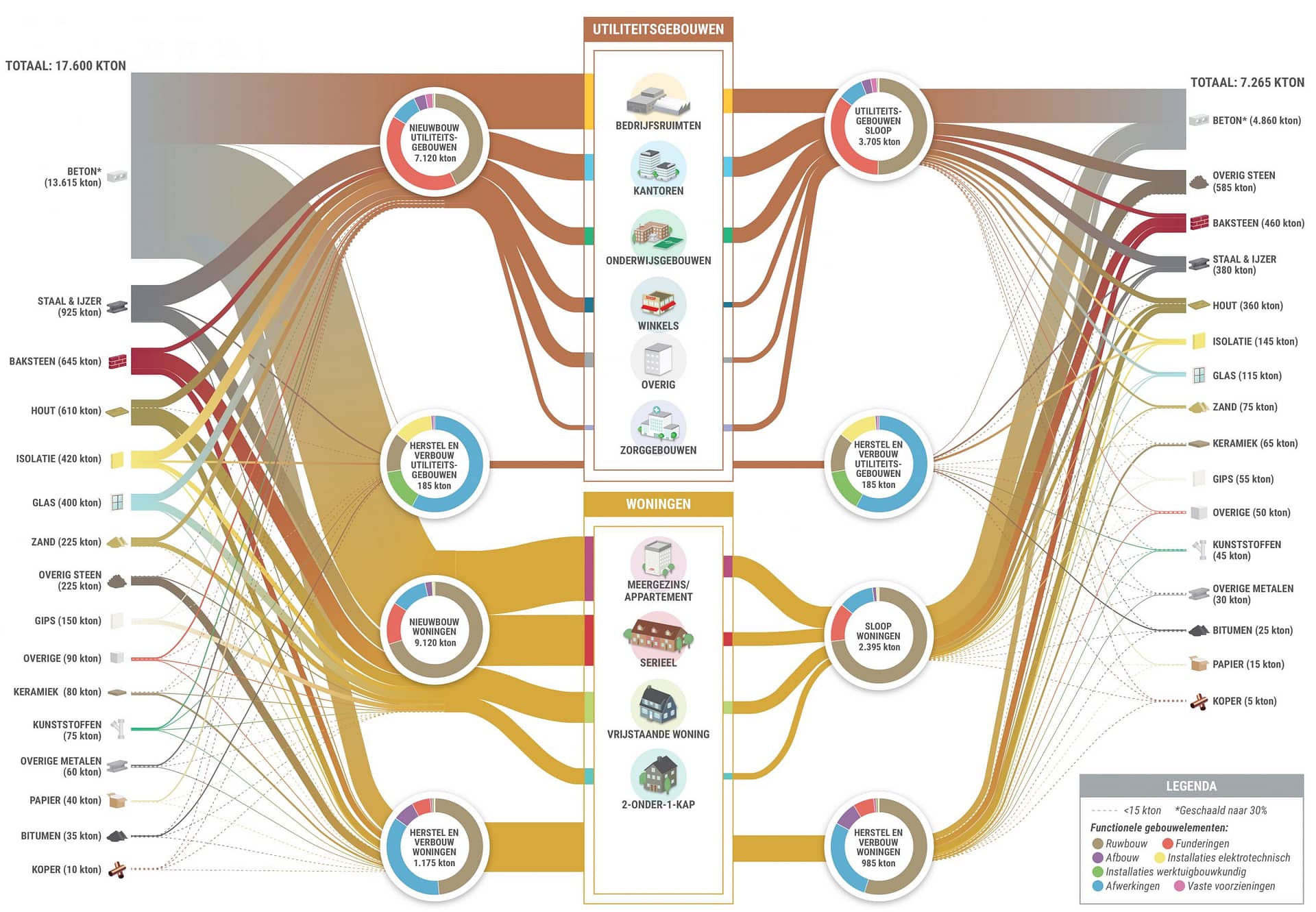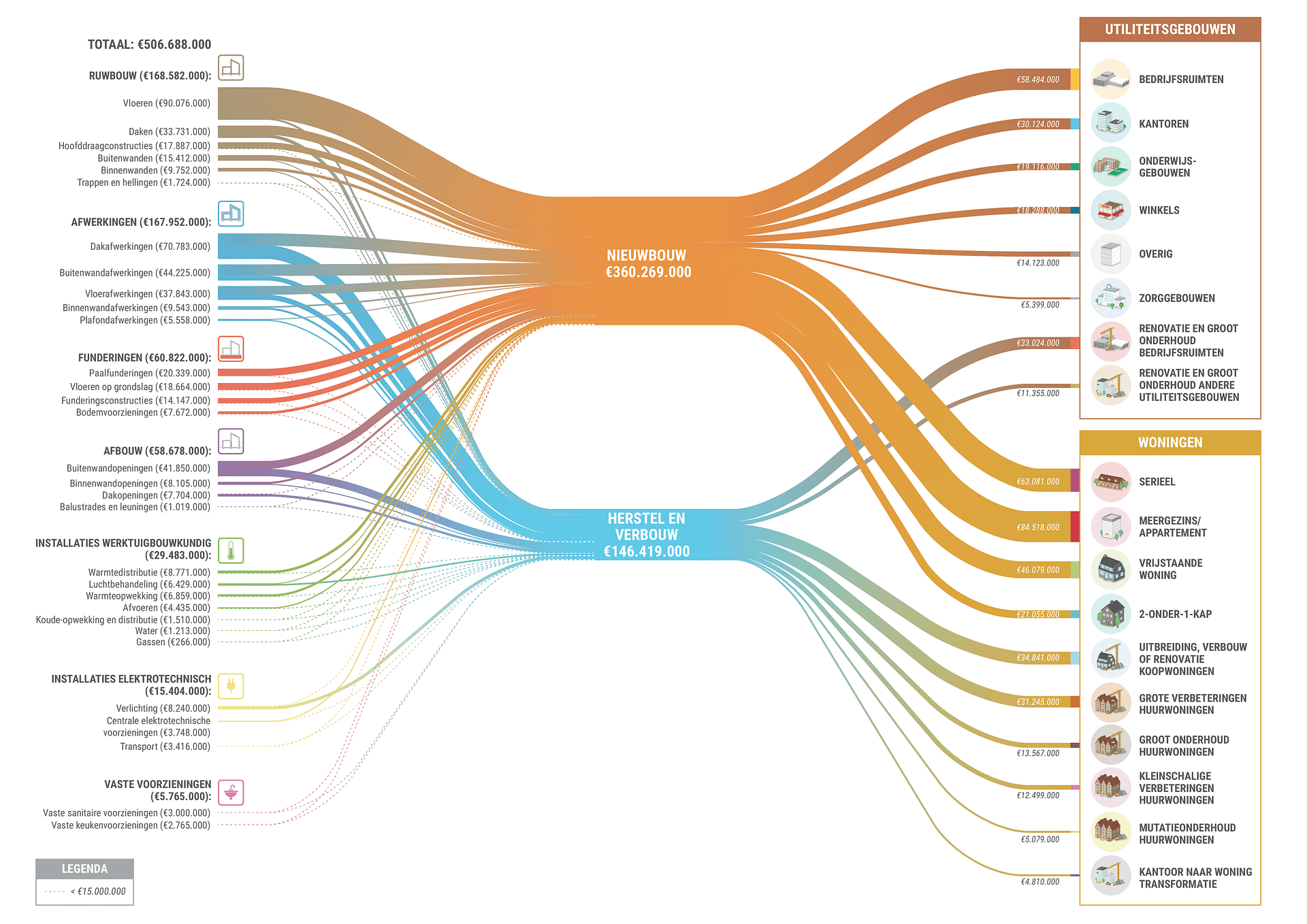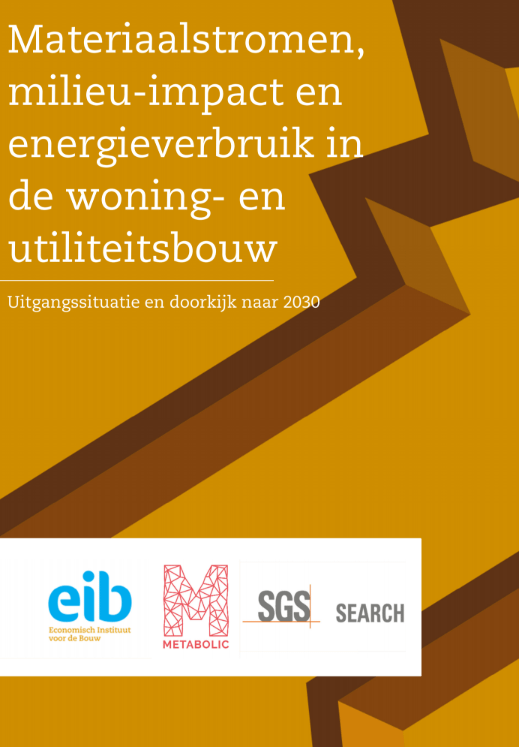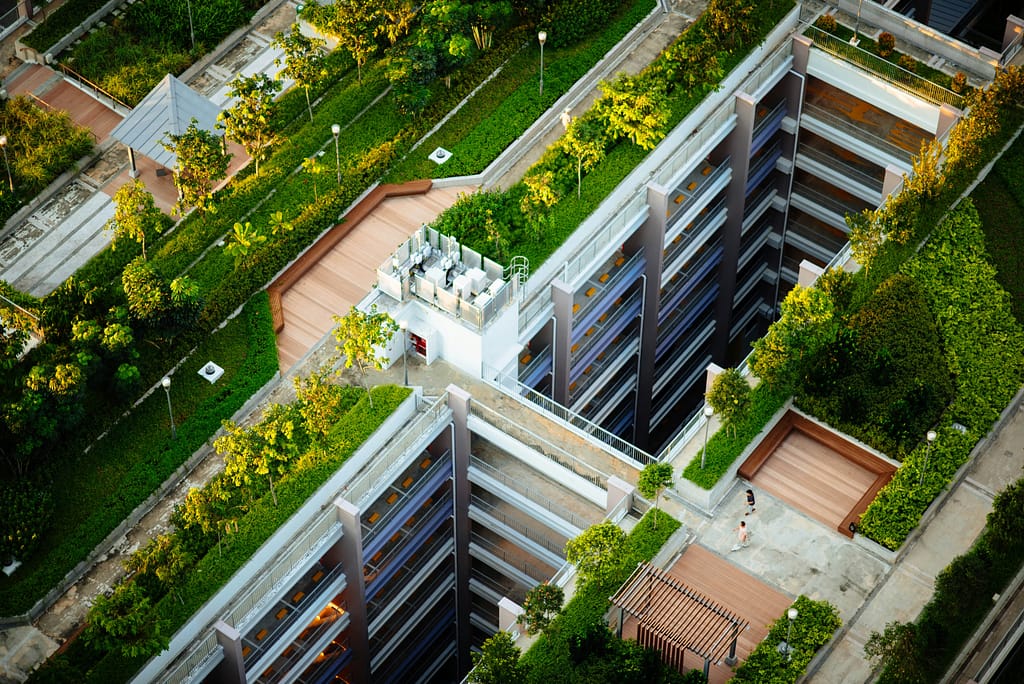Assessing all materials consumed for building in the Netherlands
Mapping the country’s construction sector with the goal to become 100% circular by 2050, analyzing material flows, environmental impact, and energy use.
- Client: Transitieteam Circulaire Bouweconomie
- Partners: Economisch Instituut voor de Bouw (EIB), SGS Search
- Date: January 2020
Construction of buildings are the biggest consumers of material
Currently, design for reuse and efficient recycling methods are limited in the construction industry, making it responsible for 60% of worldwide material consumption and 40% of waste in the Netherlands. To change this, the Dutch government has created sustainability goals together with the Transitieteam Circulaire Bouweconomie (Dutch Transition Team for a Circular Construction Economy) to become 100% circular by 2050. Important steps towards achieving this goal is a measuring and monitoring system to assess progress. To address this challenge, Metabolic, EIB, and SGS Search were commissioned to assess material flows and their related environmental impacts of the Dutch construction sector. This can inform actions to increase the circularity of this sector.
Mapping the construction sector in the Netherlands
With a focus on residential and commercial buildings countrywide, we were able to assess material flows, environmental impact, and energy use. Looking at primary, secondary and renewable origin when we were looking at the material mass inflow and for the outflows we looked at re-used, recycled, incineration and landfill. To measure the evironmental impact we used the ‘milieukosten’ indicator (MKI) (Environmental Cost Indicator), reflecting the aggregated societal costs of these impacts. We also measured the energy use and CO2 emissions that result from the production of the materials as well as the energy use of buildings. This is the first time a material flow analysis has been done at a country level in the Netherlands and specified down to material and impact contribution of specific activities and subsectors.
Opportunities for a circular construction sector by 2050
Our study shows that construction and renovation of buildings in the Netherlands results in a yearly demand for 17 million tonnes of materials, most of which is concrete. With only 13% of these input materials coming from secondary and renewable sources, it is still largely a linear system. Although it’s positive that the large majority of what is demolished is recycled (88% of the 7 million tonnes construction and demolition waste), the material loses most of its value and is primarily used outside of the sector. Only a small amount goes back into the system, yet our report shows it is theoretically possible to grow this to more than half in 10 years time.
For construction to become circular in the Netherlands by 2050, we see five key opportunities:
- Lighter weight construction, meaning fewer tonnes of primary materials used.
- Extending the lifetime of buildings so there will be less demolition, and less demand for new construction.
- More and higher value reuse and recycling, including reuse across sectors.
- The use of more renewable materials such as wood and other biobased alternatives.
- Design products for disassembly and reuse to make sure that products can be ‘mined’ from the urban environment and reused.
The results provide many opportunities to set the Dutch construction sector on a path to a circular model, however the complexity of such a study means that this is only the first step. For future studies and periodic measurements, we recommend using planetary boundaries and science-based targets as a basis for impact reduction goals for the construction sector.
- The client, the Dutch Transition Team Circular Construction Economy, has put forward a transition agenda for a circular construction economy that outlines the steps that they aim to take
- Metabolic news article on Urban Mining and Circular Construction








"Wat het onderzoek bijzonder maakt, is dat we nu voor het eerst een goed en volledig overzicht hebben van niet alleen de materiaalstromen, maar ook van de milieu-impact en het energiegebruik. Dit biedt handvatten voor vervolgstappen en sturing."
Hans Scherpenzeel, Program Manager, Circulaire Bouweconomie
Director of Sustainable Cities & Regions
ANY QUESTIONS?
For more information about this project, please get in touch.






